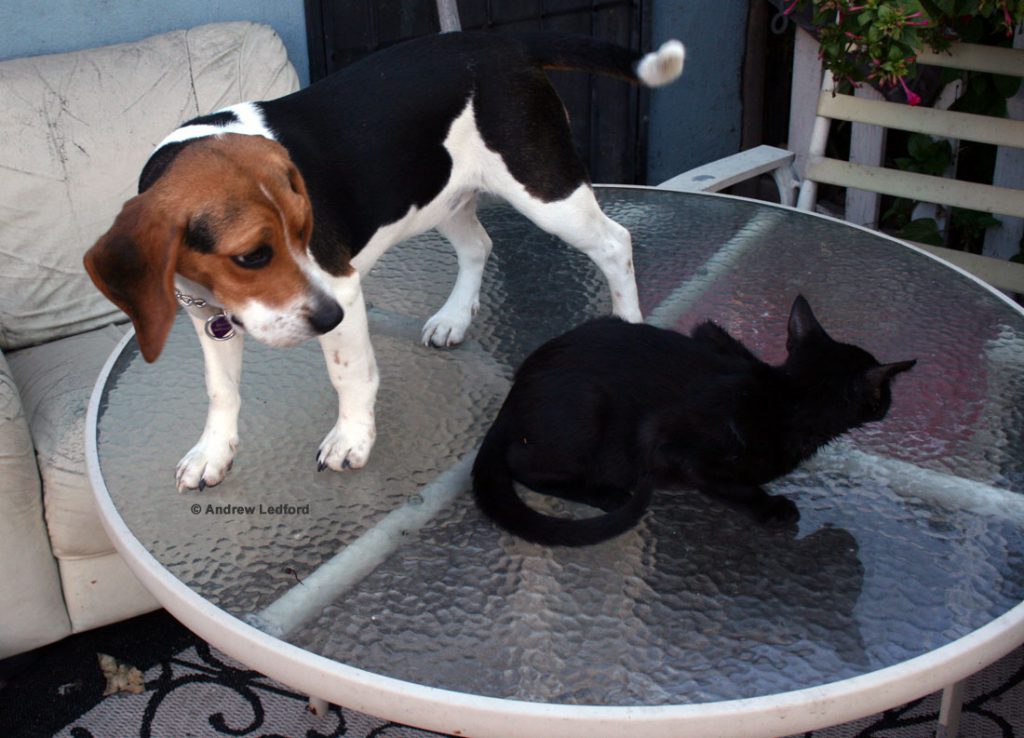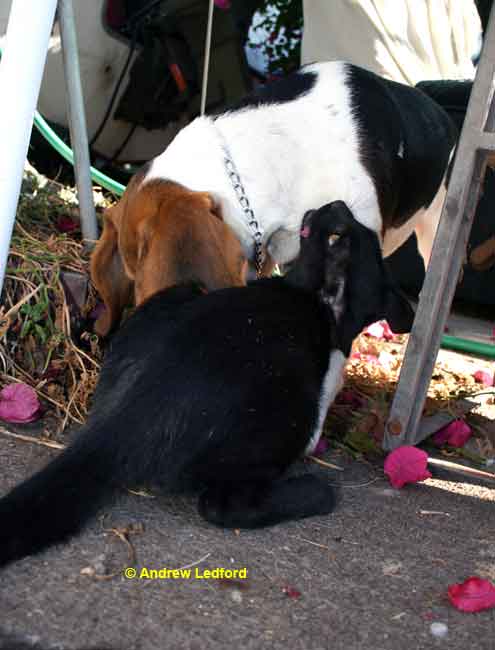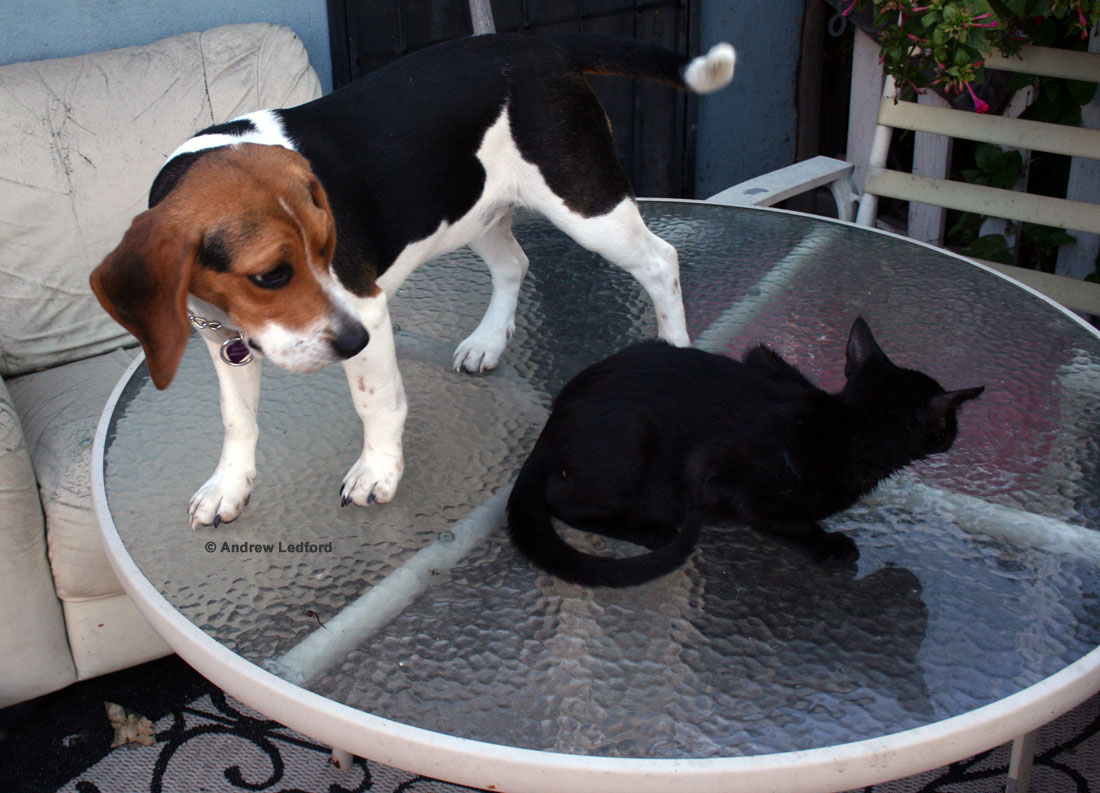How Do I Get My Dog To Like My Cat?
Do you need to get your dog to like your cat?
It’s not uncommon to introduce a new dog into a household that already has a pet. It is most common for people that have dogs to add another one. I did a short article about having two aggressive dogs in a families a while back. While two or three dog households are quite common, I also get calls from people who have one or more cats and are adding a dog. Adding a dog to a cat household has some special challenges.
Some things to consider when adding a dog to a cat house
- How old is the cat?
- How old is the dog?
- How does the cat take to the dog?
- How does the dog take to the cat?

Aggressive and fearful animals are more difficult to harmonious integrate into a balance and stable multi species living arrangement. If both the dog and cat are aggressive and/or fearful it will be more complicated. You may never be able to have the two together. However, with careful management they may be able to live in the same house without getting to each other.
If only one of your pets is a problem there is a better chance of multiple species integration.
If you have an adult cat that is fearful and a young puppy your chances of integration is fairly good. In this case it will be a matter of socializing in such a way as not to stress the cat too much, yet expose the pup enough that it bonds with the cat.
Training the cat to like the dog will require a bit of creativity. I have worked with quite a few cats ranging from very social to very fearful. In the 80s I helped care for up to 70 feral cats. At that time I also offered cat training as a separate service. Now I only do cat training as part of a dog training program.
The sociable cat
With a people friendly cat we can sometimes use the person as a calming agent and as reinforcement. For people friendly cats this works more than 50 percent of the time. However, when using this method one must take precautions to avoid accidental harm to the human and sometimes the cat.
Fearful cats
For very fearful cats and cats that are not overly people friendly we may be able to manipulate the environment to help accustom the cat to the dog.
Sometimes a dog will not be hostile toward the cat but too energetic in its play. We especially see this in puppies and young dogs. These dogs need to learn impulse control. I would also recommend teaching the playfully active puppy to respond to standard obedience commands. Having command control will give you the ability to manage the pup’s behavior when it gets too forceful.
I also work with quite a few adult dogs who are being adopted into a house that already has a resident cat. This can pose some additional challenges. First we need to determine how much of a threat the dog is to the cat. This is not always possible, but I can get a good idea by observing the dog. Some older dogs will never be good with cats. Then there are other dogs who will only be good with the cat in the presents of a human with authority.

I have heard people say that you should just let the cat give the dog a couple good swats. The idea is after getting smacked by the cat the dog will learn to leave the cat alone. This works sometimes. It would probably work best in a scenario with young dogs. However, there are times when it is not practical or the right thing to do.
I have had several German Shepherd Dogs who would not be at all deterred by any domestic cat. My last dog was one of these. He would let a cat play with his tail and show indifference if I was around. However, if I was absent he would go after and get cats rather quickly. If a small person (someone under 130 lbs) was holding the leash he had no qualms about pulling them along behind as he continued his forward drive for the cat prize. The dog I had in high school was much worse. That dog would chase anything. I had a rather dog aggressive and crafty cat at the same time. Needless to say the cat and the dog did not get along. The cat would lure the dog under the bed then scratch him. The dog acted as though he didn’t care. He wanted the cat no matter what. Fortunately we learned how to manage both the dog and the cat so that neither one would harm the other.
No matter how good your new dog and cat combination seem to be getting along, I would not leave them alone together for at least 6 months. During this time you’ll have a chance to observe any behavior that may indicate there could be a problem. By going through a dog training program I would hope that you learn the subtle tell tale signs of possible problems. If you are in one of my training programs you can always call me for a follow-up phone consultation.
Wishing you the best in dogs and in life,
Andrew Ledford
714-827-4058 Southern California Dog training




